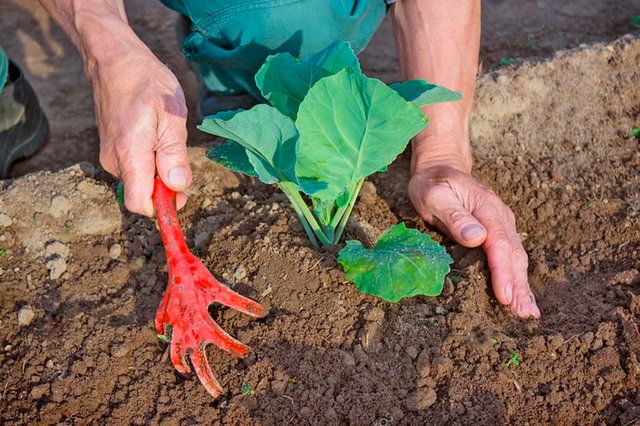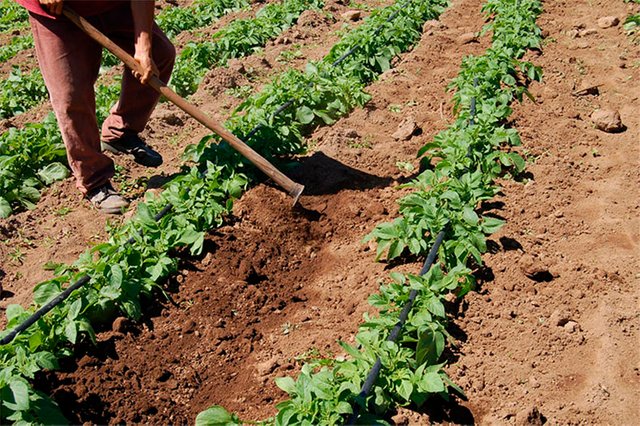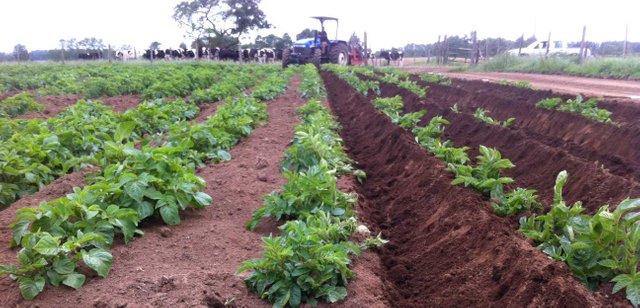Hilling in agriculture
Greetings to all my friends steemians, today I want you to know about the practice of "hilling" in crops, this work is of vital importance for plants, particularly I do in all my crops, as it stimulates the growth of plants, especially those Of short cycle, like the legumes. So I invite you to know "Hilling in Agriculture"
Hilling in agriculture
The hilling, is a cultural practice that the farmer customarily performs in their crops, this work consists of bringing soil to the foot of the stem of the plants to protect it from erosion and the high and low temperatures of the climate , also the hilling serves to stimulate the growth of the roots.

Source
What plants need the hilling?
The practice of hilling is usually carried out on plants with erect stems such as tomatoes, locotes, cabbages, eggplants, chilies, cauliflowers, potatoes, broccoli, zucchini, etc. And among those who do not need them, we can mention the radishes, the parsley, the chives, the celeri. , onions, etc.
How is hilling done?
As we pointed out at the beginning, this involves simply placing soil around the plant with the use of a hoe, although when it comes to large crops, agricultural tractors are used. The "hilling" can be done two or three times during the cultivation, taking into account the height of the plant in the different stages of growth, or it can also be done by emergency when the stem has been affected by the intense rain.
To understand a little more about this practice, we will take as an example the cultivation of tomatoes, in this case and almost all other vegetables, the "hilling" is done ten days after the transplant, before the plant exceeds 20 to 25 centimeters Tall. In this task it is usual to apply fertilizers simultaneously, the fertilizers can be minerals of the NPK formula, as well as compost or earthworm humus, which is distributed in the irrigation furrow and then this compost is mixed with the earth at the foot of the plant.
Images of a horn with the use of escardilla:

Source
Images of potato hilling with agricultural tractor:

Source
Benefits of plant hilling
Allows aeration and oxygenation of the soil.
Prevents the stem of the plant from burning with the sun, which produces the disease called sancocho standing.
Prevents the fall of plants by erosion, especially in rainy seasons.
Avoid fungal diseases.
Promotes the growth and development of roots in the soil.
Facilitates the application of fertilizer to plants.
Excess moisture in the foot of the plants is avoided.
It favors the vertical growth of the plants and the stability in the soil.
With the practice of hilling, the weeds are eliminated.
References: Source
We @farms are pleased to have come across this post we encourage homestead at all level, steem will feed the world with one small farm at a time.
Resteem